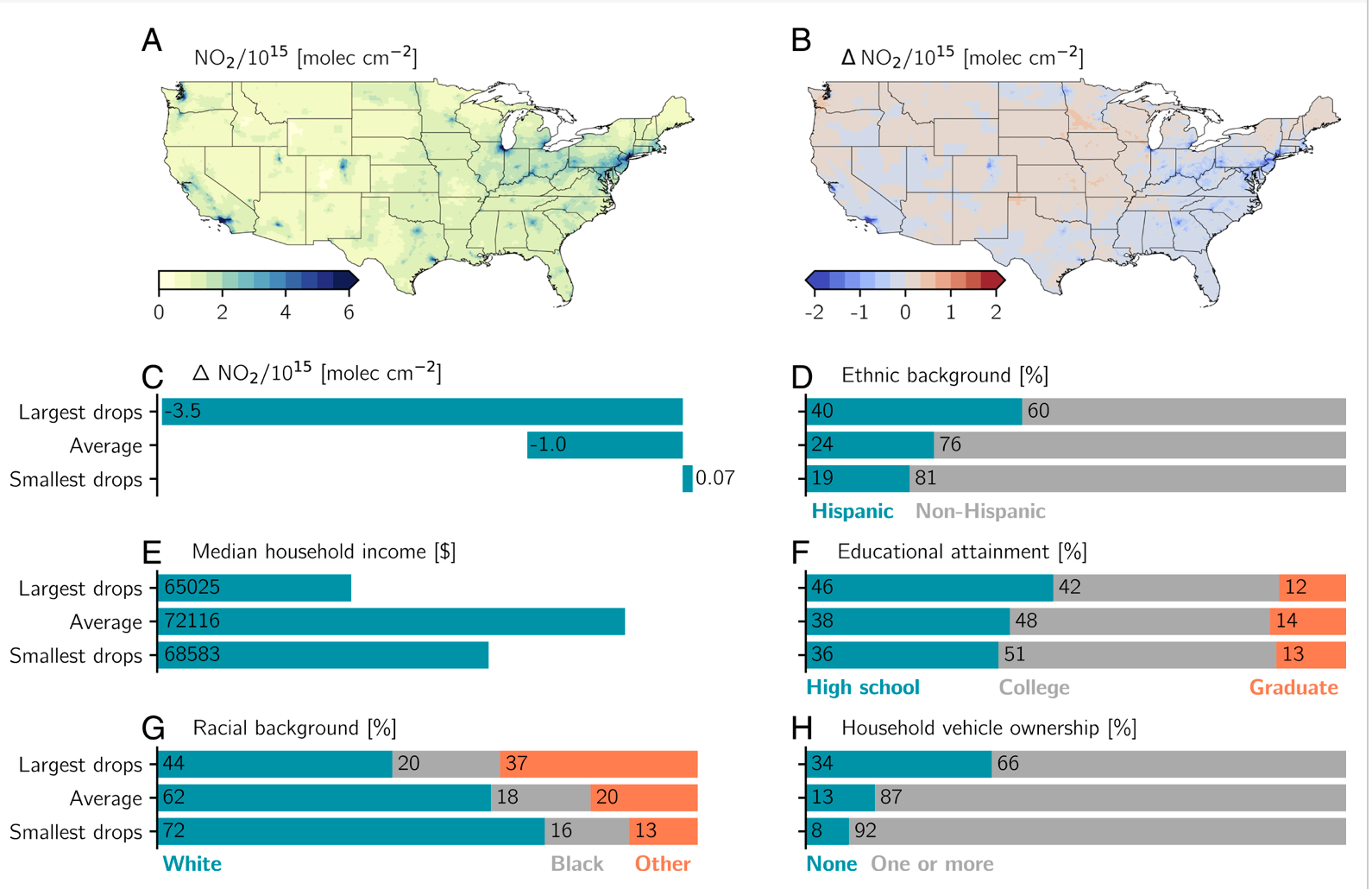CHI member and Research Scientist in the Environmental and Occupational Health Department, Dr. Gaige Kerr, CHI member and Assistant Research Professor in the Environmental and Occupational Health Department, Dr. Dan Goldberg, and CHI Director and Associate Professor of Environmental and Occupational Health, Dr. Susan Anenberg, published several papers on the relationships between human activity during the COVID-19 pandemic and its effects on nitrogen dioxide pollution. In Goldberg et al. (2020), the authors leveraged TROPOMI satellite data to evaluate changes in NO2 emissions during the COVID-19 lockdowns, calculating that NO2 decreased in 20 American cities by a median drop of 21.6%. In Kerr, Goldberg, & Anenberg (2021), the authors again leveraged TROPOMI satellite data, this time to evaluate how COVID-19 lockdowns affected disparities in NO2. The authors found that least white communities experienced the largest reductions in NO2 emissions during the lockdown period but because disparities in NO2 pollution are so large between the least and most white communities, least white communities still experienced exposure to higher NO2 levels. Lastly, in Kerr et al. (2022), the authors used a semi-empirical approach to asses whether or not regions in Europe with larger shares of diesel passenger vehicles experienced greater NO2 reductions during COVID-19. The authors found that diesel passenger vehicles have a profound influence on the magnitude of NO2 reductions.
Read more from the papers linked below:
-
Kerr et al. (2022). Diesel passenger vehicle shares influenced COVID-19 changes in urban nitrogen dioxide pollution
-
Kerr, G. H., Goldberg, D. L., & Anenberg, S. C. (2021). COVID-19 pandemic reveals persistent disparities in nitrogen dioxide pollution
-
Goldberg et al. (2020). Disentangling the Impact of the COVID-19 Lockdowns on Urban NO2 From Natural Variability


